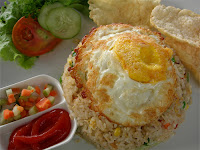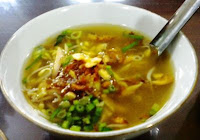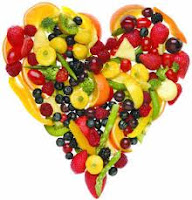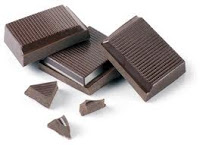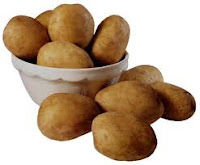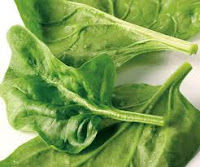Public Indonesia is the highest rice eaters in the world. To the extent that the government trouble limiting consumption of rice from this rice. Yet if you do not eat rice stuffed just a suggestion. Evidence, some countries make corn, wheat, sago and cassava as a staple food. Let's find the staple food in some parts of the world.
Egypt: Isy
Isy is the staple food for the people of Egypt. Isy shaped like bread, round, and made of wheat. It was like white bread, only more dense and fiber is more pronounced. Isy is usually eaten with grilled chicken, mutton, or fish. How to eat the same as eating bread. Isy dipped in sauce and eaten with a side dish turns. No need to spoon and fork. Once eaten, the Egyptians could spend 3-4 pieces ISY. If you have no rice, ISY was still served.
Brazil: Cassava
Originally cassava or cassava is a staple food of the Brazilian population. But now gaining popularity in the Americas and Africa. Cassava, also known as cassava or manioc, is a tropical and subtropical annual tree of the Euphorbiaceae family. Tuber is widely known as a staple food-producing carbohydrates and leaves as a vegetable.
In Brazil cassava cooked in various ways and are widely used in a variety of cuisines. Usually boiled potatoes to replace and complement the cuisine. Cassava flour can be used to replace wheat flour, and is good for allergy sufferers.
Africa: Cassava
In Nigeria yam cooked in different variations. Several variations of cassava-based dishes commonly eaten Nigerian citizens is the issue (spicy boiled cassava) and iyan (mashed sweet potatoes).
India: Nuts
The staple food of India is atta (whole wheat flour), different kinds of beans, and rice. The most popular type of bean is is MASOOR (lentils), chana (Arabic beans), toor (gude beans), urad (black beans), and green beans. Pulses may be used whole, peeled, halved after the peel (called dal), or beans are mashed into Arabic flour (besan).
Mexico: Corn
Corn starch is a basic ingredient for many staple food of Mexico. Of cornmeal born tacos, burritos, tortillas, tamales, and quesadillas. Mexico assortment knew cornstarch. Because neighboring countries with Uncle Sam's has a variety of corn. In addition to yellow corn, no corn blue, red corn and white corn. Blue corn is often used as the base material for the quesadilla.
Well, what about Indonesia? Besides rice, the staple food consumed especially Indonesian people?
Staple food for Indonesian people is rice. People who used to eat rice as a staple food that the people in the western part of Indonesia such as Java and Sumatra. However, in addition to rice, the staple food of Indonesia other than corn starch and can usually be found in the eastern part of Indonesia, such as Irian Jaya, the dominant sagunya and Sulawesi are dominant with food use corn. The following description of the three nutritional staple food of Indonesian society.
Rice
Rice is rice that has been boiled and ditanak. Besides consumed Indonesia, rice is also eaten most of the population of Asia as the main source of carbohydrates in the daily menu.
Rice as a staple food is usually served as a side dish to complement the flavor and also complement the nutritional needs of a person. Rice can be worked over with other ingredients into new dishes, such as fried rice, yellow rice, or rice Kebuli. Rice can be said for the staple food in Asia, especially Southeast Asia.
Sago
As a source of energy, the equivalent of sago rice, maize, cassava, potatoes, and wheat flour. Sago can be used as a potential food source of carbohydrates because abortion remains high at 84.7 gram/100 gram of material.
Unfortunately, sago including food very poor in protein. Sago flour protein content of only 0.7 g/100 g, much lower than rice flour, corn, and wheat. If the terms of the levels of vitamins and minerals too, sago have lower levels when compared with other staples.
Because of the potential nutritional and sago are not as complete as other basic foodstuffs, starch should be consumed together with other materials that better levels of nutrition. The concept of diversification of food consumption as that which has been practiced traditional society Maluku and Papua. They combine sago and fish (as a source of protein) and a variety of vegetables (as a source of vitamins, minerals, antioxidants, and dietary fiber).
Corn
Although in the past some of our communities using corn as a staple food, now more classified as vegetables, snacks, and processed into a side dish. When viewed more closely, the nutritional value of corn is not less than rice. In 100 grams of rice contains 360 calories of energy, equivalent to the energy in corn. Carbohydrate content of corn is also largely composed of starch that can be filling.
Besides the three staple foods, the fact there are some other foods considered potentially be an option as a staple food of Indonesian society, namely potatoes, papeda, bulbs arrowroot, taro, cassava, rice meras, vermicelli and noodles, whole wheat bread, and noodles.






